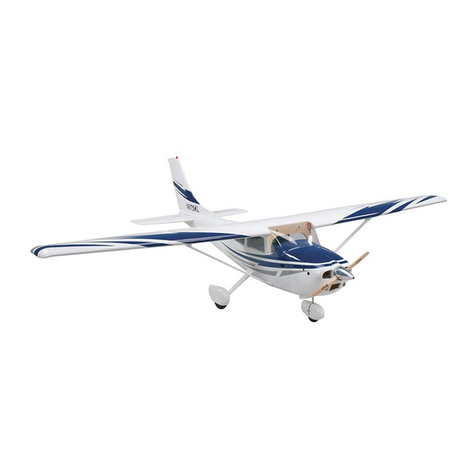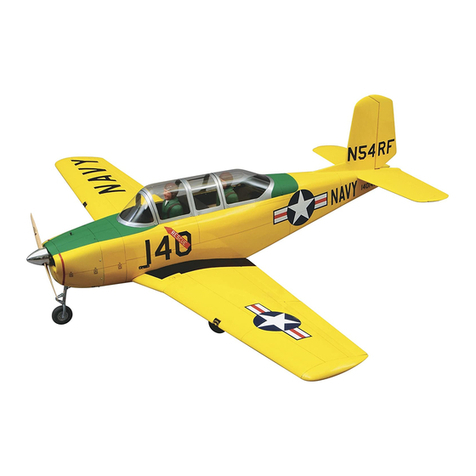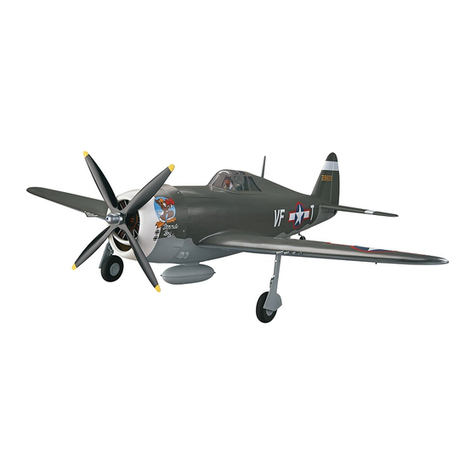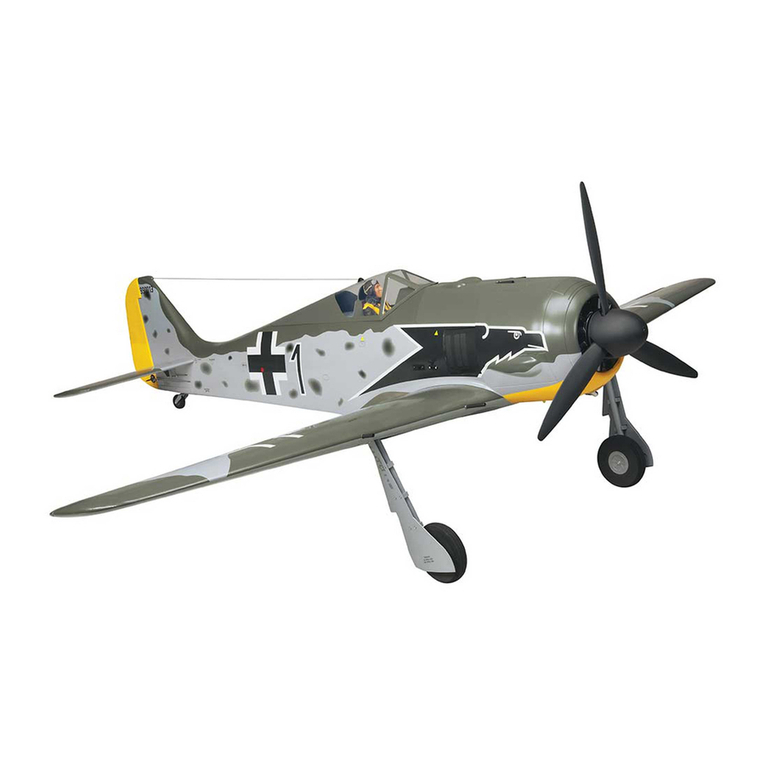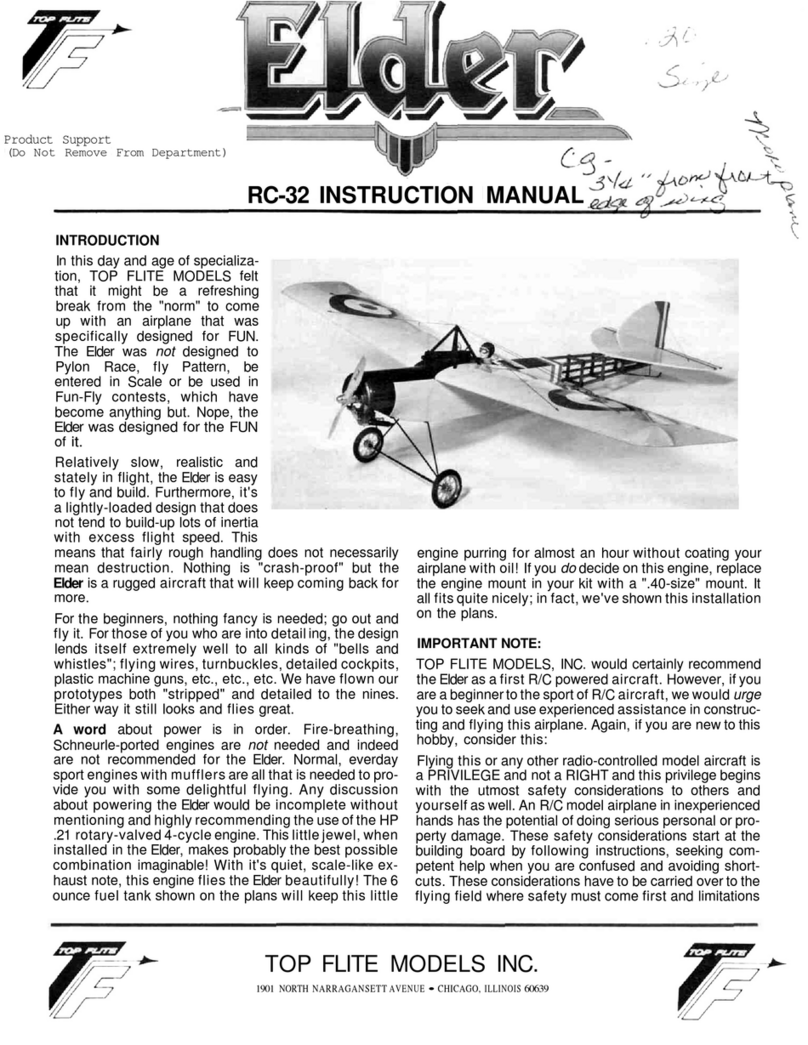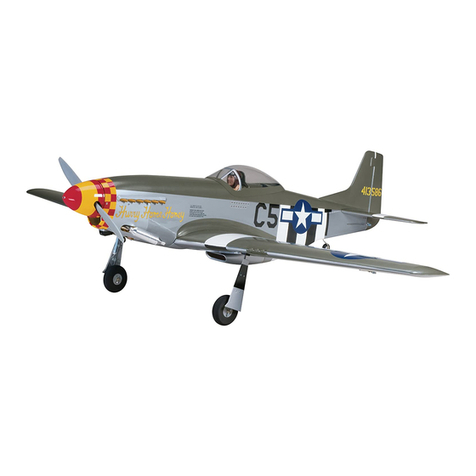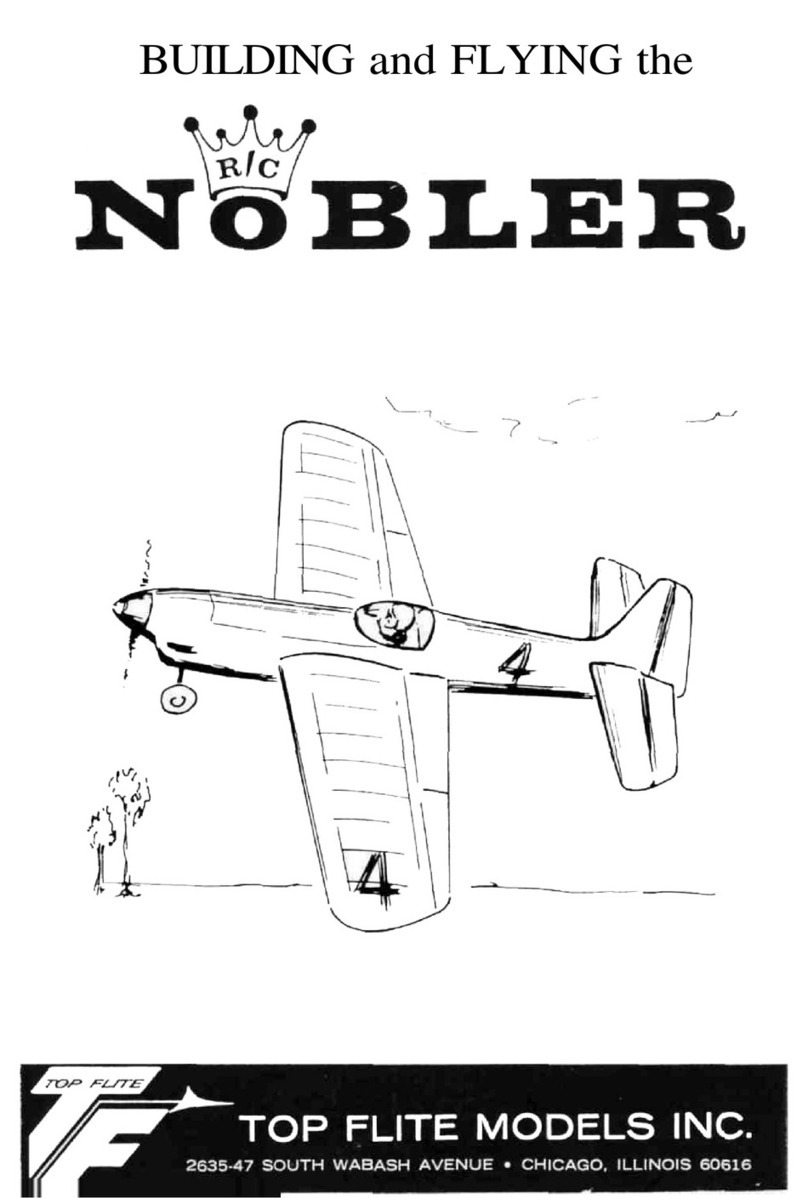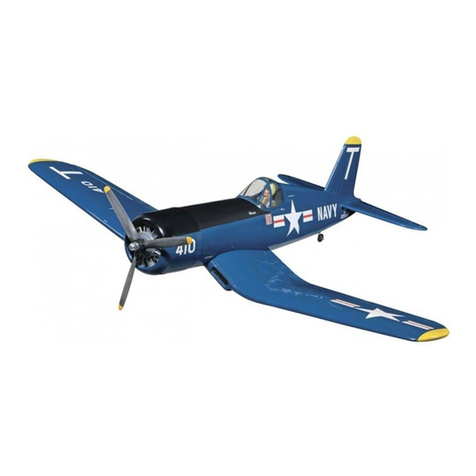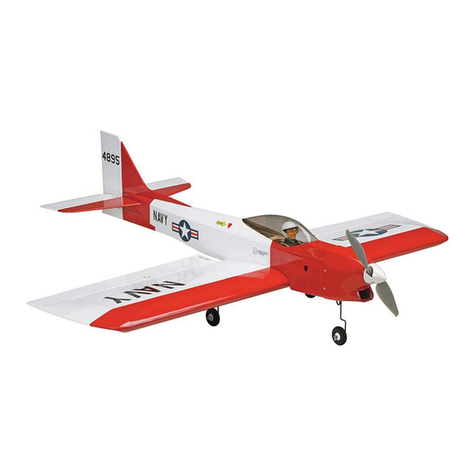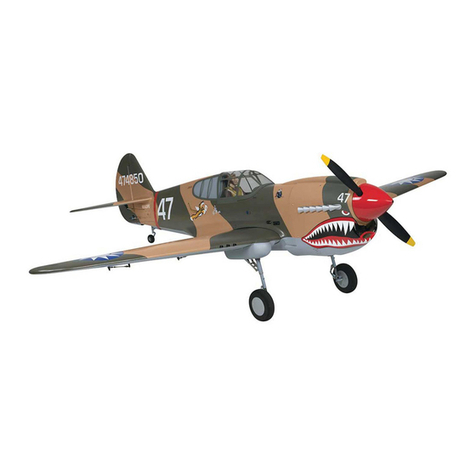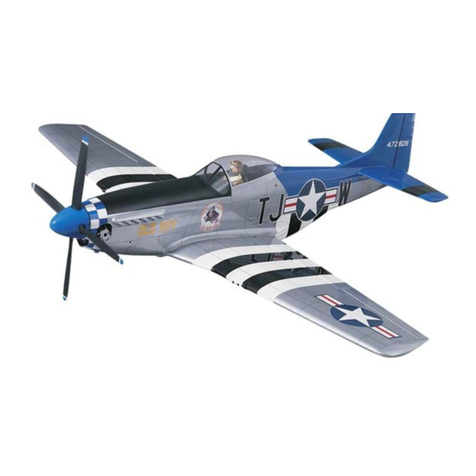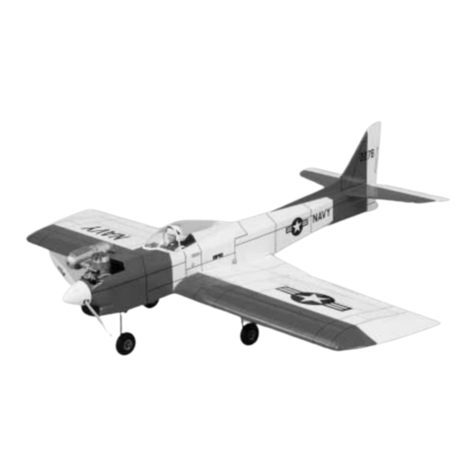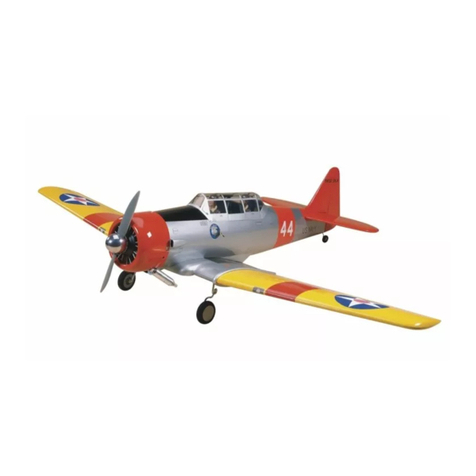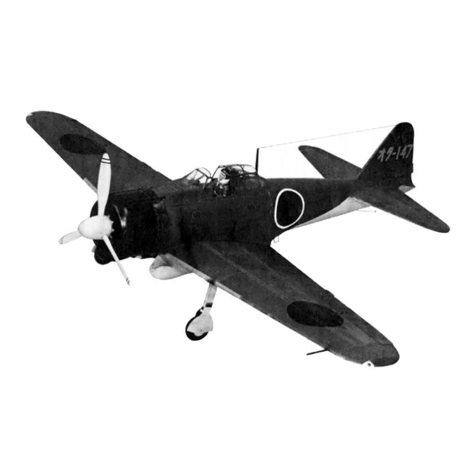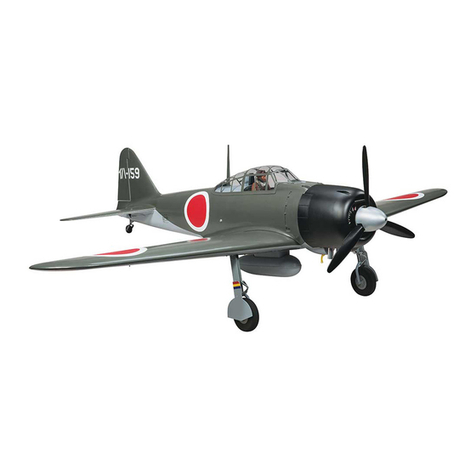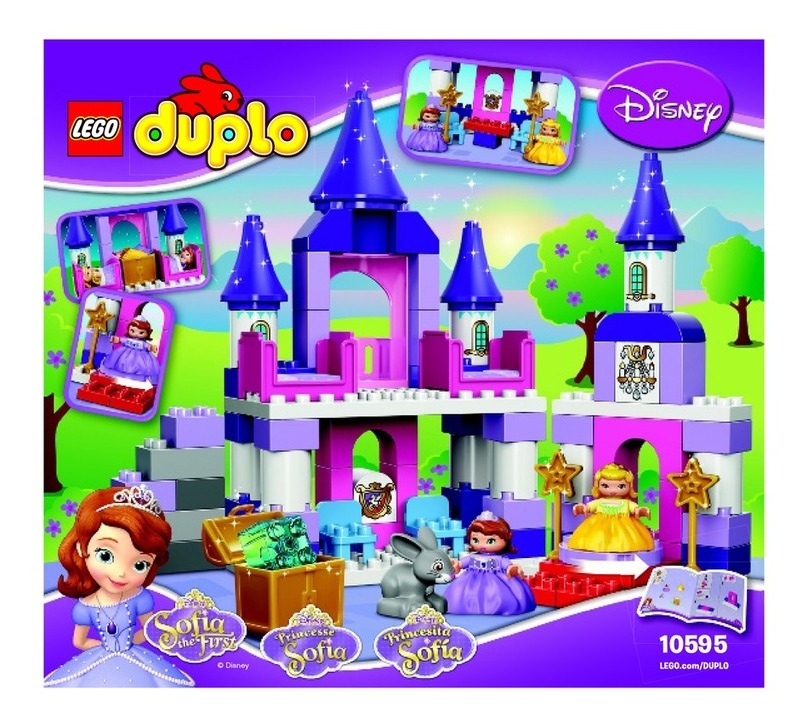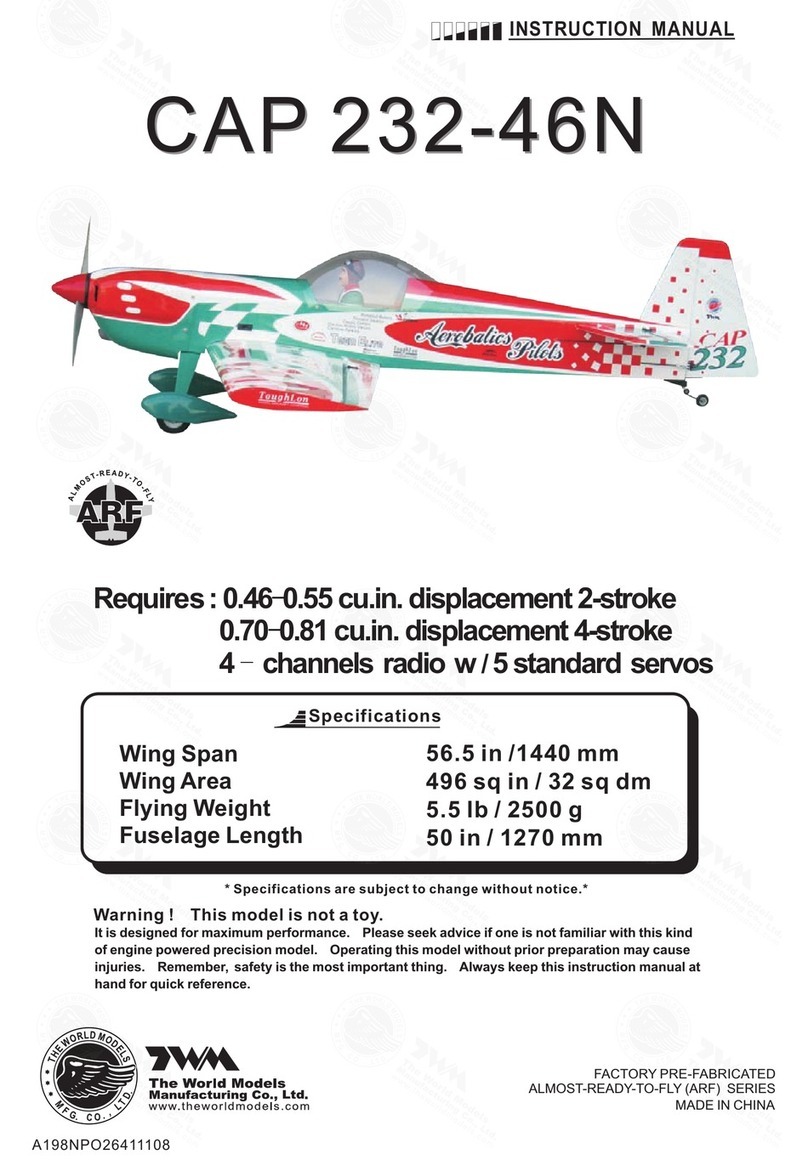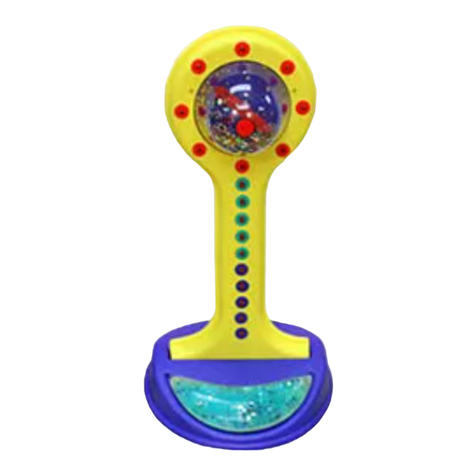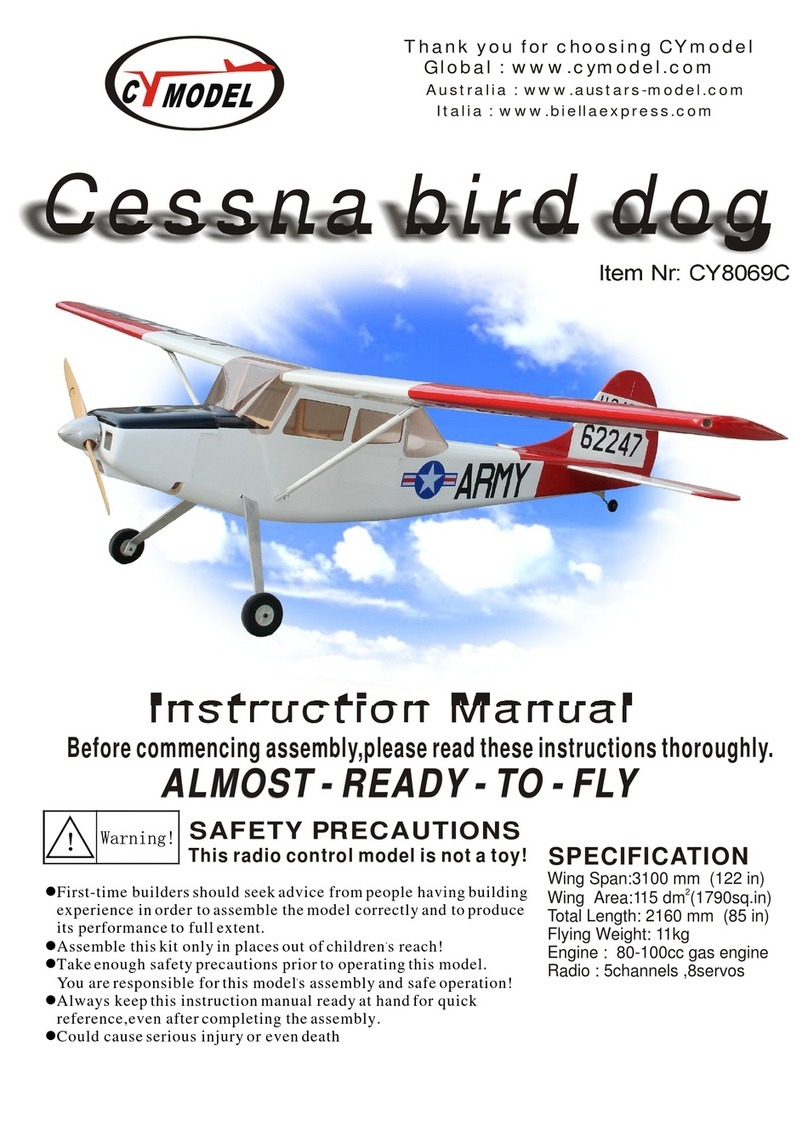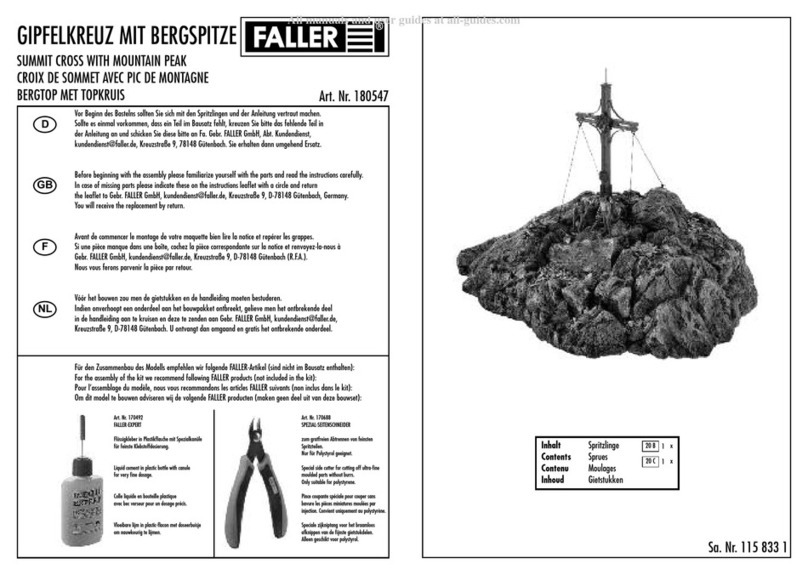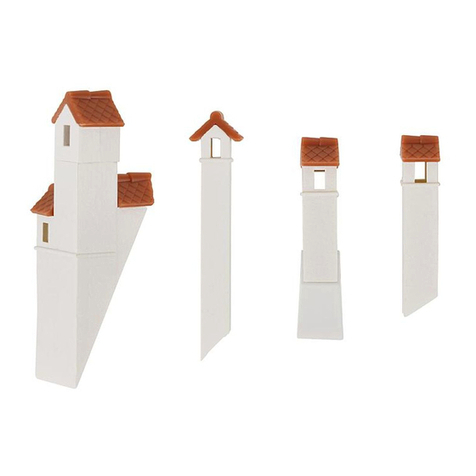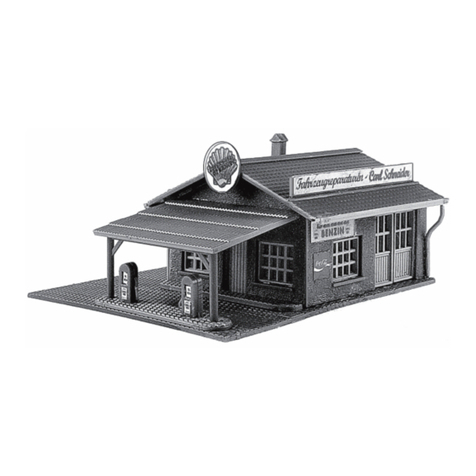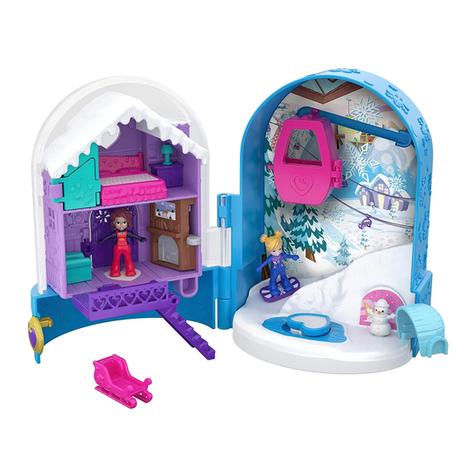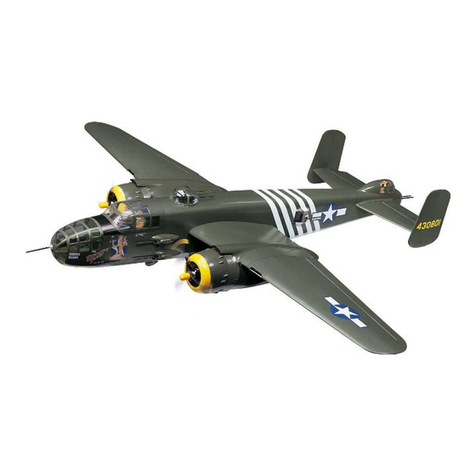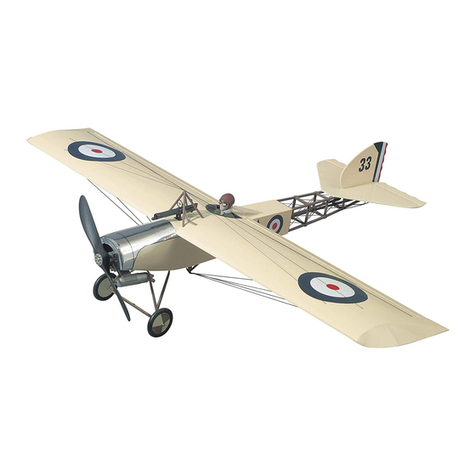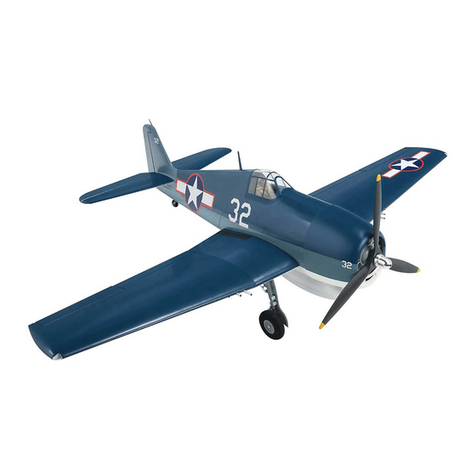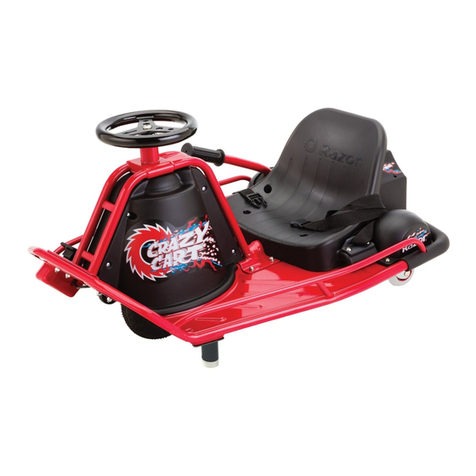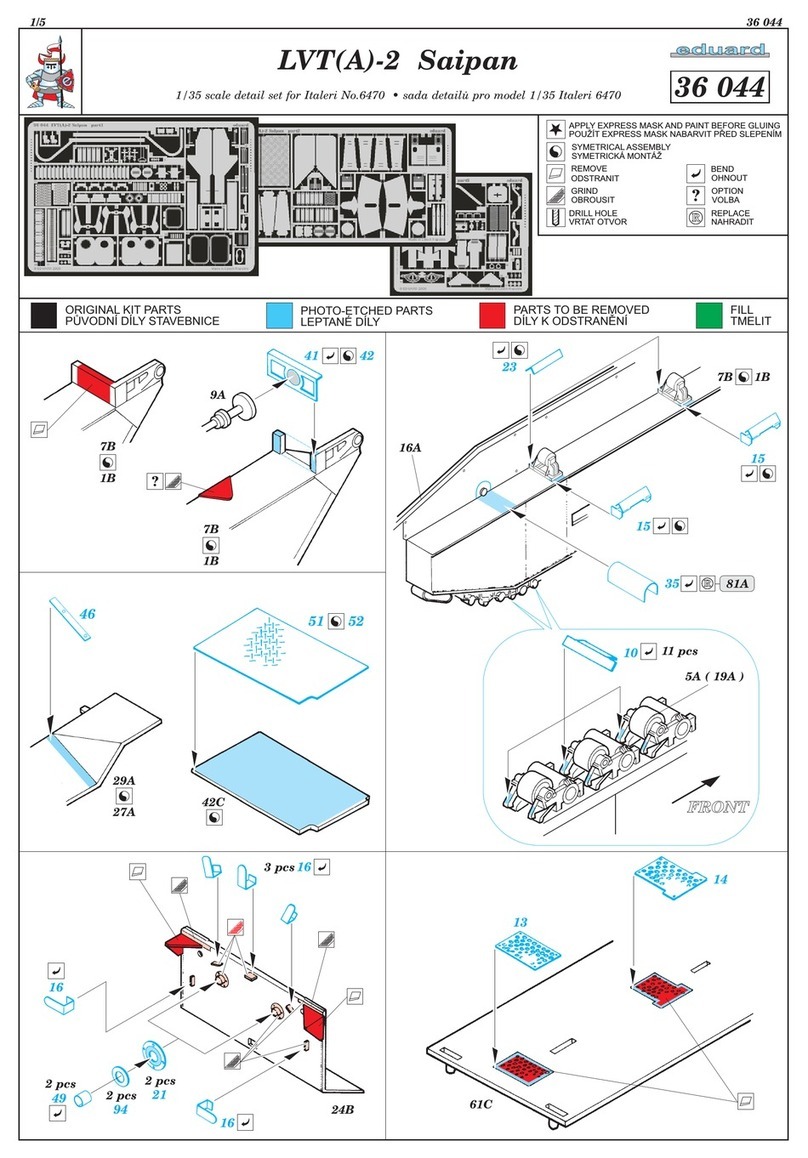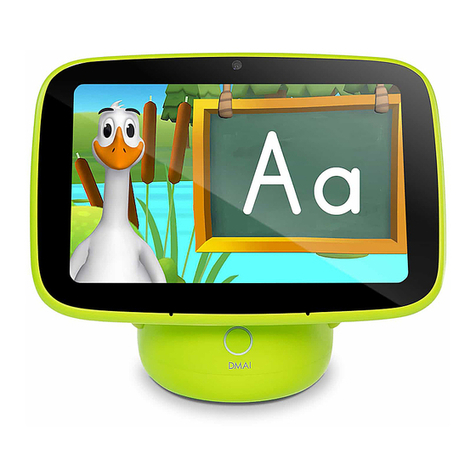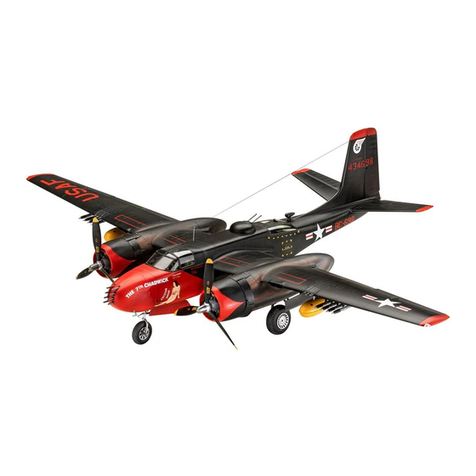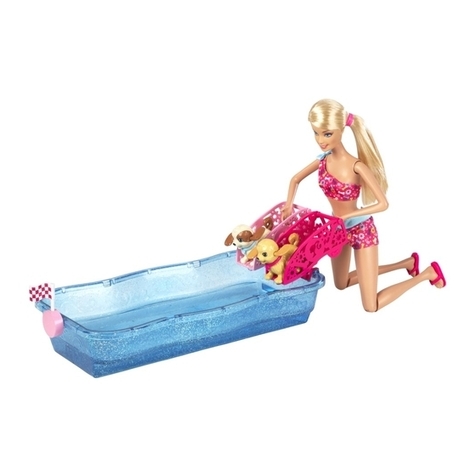3
If you would like photos of a full-size F4-U for scale
documentation, or if you would like to study the photos
to add more scale details, photo packs are available from:
Bob’s Aircraft Documentation
3114 Yukon Ave Ph: (714) 979-8058
Costa Mesa, CA 92626 Fx: (714) 979-7279
e-mail: www.bobsairdoc.com
AMA
We urge you to join the AMA (Academy of Model
Aeronautics) and a local R/C club. The AMA is the
governing body of model aviation and membership is
required to fly at AMA clubs. Though joining the AMA
provides many benefits, one of the primary reasons
to join is liability protection. Coverage is not limited to
flying at contests or on the club field. It even applies
to flying at public demonstrations and air shows. Failure
to comply with the Safety Code (excerpts printed in
the back of the manual) may endanger insurance
coverage. Additionally, training programs and instructors
are available at AMA club sites to help you get started
the right way. There are over 2,500 AMA chartered
clubs across the country. Contact the AMA at the
address or toll-free phone number below.
Academy of Model Aeronautics
5151 East Memorial Drive
Muncie, IN 47302-9252
Ph. (800) 435-9262
Fx (765) 741-0057
Or via the Internet at: http://www.
modelaircraft.org
IMPORTANT!!! Two of the most important things you
can do to preserve the radio controlled aircraft hobby
are to avoid flying near full-scale aircraft and avoid
flying near or over groups of people.
SAFETY PRECAUTIONS
PROTECTYOUR MODEL,YOURSELF &
OTHERS.....FOLLOWTHESE IMPORTANT
SAFETY PRECAUTIONS
1. Your Top Flite F4-U Corsair ARF should not be
considered a toy, but rather a sophisticated, working
model that functions very much like a full-size
airplane. Because of its performance capabilities,
the Corsair, if not assembled and operated correctly,
could possibly cause injury to yourself or spectators
and damage to property.
2. You must assemble the model according to the
instructions. Do not alter or modify the model, as
doing so may result in an unsafe or unflyable model.
In a few cases the instructions may differ slightly from
the photos. In those instances the written instructions
should be considered as correct.
3. You must take time to build straight, true and strong.
4. You must use an R/C radio system that is in first-
class condition, and a correctly sized engine and
components (fuel tank, wheels, etc.) throughout the
building process.
5. You must correctly install all R/C and other
components so that the model operates correctly
on the ground and in the air.
6. You must check the operation of the model before
every flight to insure that all equipment is operating
and that the model has remained structurally sound.
Be sure to check clevises or other connectors often
and replace them if they show any signs of wear
or fatigue.
7. If you are not an experienced pilot or have not flown
this type of model before, we recommend that you
get the assistance of an experienced pilot in your R/C
club for your first flights. If you’re not a member of a
club, your local hobby shop has information about
clubs in your area whose membership includes
experienced pilots.
8. While this kit has been flight tested to exceed
normal use, if the plane will be used for extremely
high stress flying, or if engines larger than ones in
the recommended range are used, the modeler is
responsible for taking steps to reinforce the high
stress points and/or substituting hardware more
suitable for the increased stress.
9. WARNING: Some of the parts in this kit are made
of fiberglass, the fibers of which may cause eye,
skin and respiratory tract irritation. Never blow into
one of these parts to remove fiberglass dust, as
the dust will blow back into your eyes. Always wear
safety goggles, a particle mask and rubber gloves
when grinding, drilling and sanding fiberglass parts.
Vacuum the parts and the work area thoroughly after
working with fiberglass parts.
We, as the kit manufacturer, provide you with a top
quality, thoroughly tested kit and instructions, but
ultimately the quality and flyability of your finished
model depends on how you build it; therefore, we
cannot in any way guarantee the performance of
your completed model, and no representations are
expressed or implied as to the performance or safety
of your completed model.
Remember: Take your time and follow the
instructions to end up with a well-built model
that is straight and true.
DECISIONSYOU MUST MAKE
This is a partial list of items required to finish this
model that may require planning or decision making
before starting assembly. Order numbers are provided
in parentheses.
ENGINE RECOMMENDATIONS
As specified on the cover of this instruction manual, the
Corsair is designed for a .61 cu in [10.0cc] two-stroke
or .91 cu in [15.0cc] four-stroke glow engine. And the
Corsair has the lightest airframe and wing loading of
all the “Gold” ARFs to date, so there is definitely no
need to overpower this model.
If using the O.S.
®Max .65AX 2-stroke, the stock
muffler may be used, but the O.S. #744B muffler
extension (OSMG2582) or the Bisson Pitts-style muffler
(BISG4061) will be required. If using the O.S. Max .91S
II 4-stroke engine, an O.S. FS70-91 Exhaust Header
Pipe (OUT) (OSMG2625) is also required. If using
the O.S. .95V, the M11 in-cowl 80D header pipe was
also used (OSMG2568). Refer to the Engine Mounting
instructions starting on page 19 for more information
and illustrations.




















